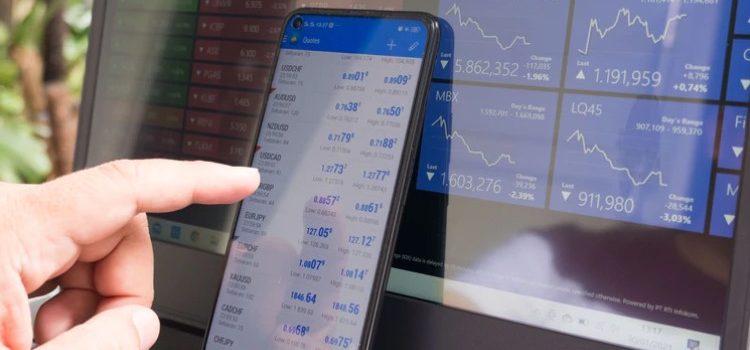

This article is an excerpt from the Shortform book guide to "One Up On Wall Street" by Peter Lynch. Shortform has the world's best summaries and analyses of books you should be reading.
Like this article? Sign up for a free trial here.
Do you have a stock you’ve been eyeing for a while but are hesitant to start investing? What are some things you should consider before buying a stock share?
Investing your hard-earned money in stocks is a big decision. Therefore, it’s important to do your due diligence and evaluate the current performance as well as the profit potential of the company you want to invest in.
Here is how to evaluate a stock’s money-making potential, according to Peter Lynch.
How to Assess and Research a Company
In his book One Up on Wall Street, legendary investor and former manager of the Fidelity Magellan Fund Peter Lynch explains how to evaluate stocks before investing. According to Lynch, this should only take a few hours per stock.
(Shortform note: Others feel you might need to spend more time than a few hours on each stock: To become a true home-grown stock analyst, you might also wish to research a company’s suppliers, customers, and competitors—a process that could take days or weeks.)
Do this in several steps:
Step 1: Determine What Type of Stock It Is
The first step of your research is to determine what type of stock you’re looking at, writes Lynch. This is because you might only want to buy a certain type of stock now based on your needs and risk tolerance—for instance, you might reduce risk by investing in a dependable company.
(Shortform note: Rather than letting your current needs and risk tolerance determine what type of stock you buy, investment expert Benjamin Graham proposes determining if you’re an aggressive investor or a defensive investor and letting that identity inform your stock buying decisions. An aggressive investor is eager to obtain better-than-average returns on their investments while a defensive investor simply wants to obtain decent returns. Consider deciding which type of investor you are and then steering toward appropriate stock types (an aggressive investor might favor fast-growth companies while a defensive investor might prefer dependable companies).)
Step 2: Gather Pertinent Data
The stock type you determined in the last step tells you what information you need to gather on the stock to evaluate its future success and assure yourself that it’s a worthy investment, writes Lynch. Certain data will only be helpful in evaluating the potential of certain stock types.
While the task of data collection can seem daunting to a novice investor, it’s simpler than you might think. You just need a few pieces of information and a general understanding of how well the company is performing. You can obtain this from the investor-relations department of the company, your broker, company reports, or by visiting the company itself if you can.
(Shortform note: Gathering the data you need to make an intelligent investing decision may seem tedious or boring, if not superfluous. But Benjamin Graham provides a compelling reason to do your due diligence: When you purchase a stock, you become a part-owner of a company. That means you have both the responsibility and the privilege to pay attention to your company’s progress and speak up when you see management making poor decisions. When you take on the perspective of a company owner, gathering data on your business seems critical.)
Here’s the data you should find, says Lynch:
The P/E Ratio
The P/E ratio is the stock Price to company Earnings ratio. You obtain this by dividing the company’s stock price by the company’s earnings per share (essentially how much the company makes per share; this is net profits divided by the number of shares issued).
For instance, if a stock price is $4.00 and the company’s earnings per share are $1.00, the P/E ratio will be ($4.00 : $1.00 =) 4.
Lynch writes that the P/E ratio is helpful for several reasons: You can think of it as the number of years it will take the company to earn back your initial investment. Therefore, a high P/E ratio (20 or 30, for instance) may be unattractive while a low one (say 6 or 7) may be attractive.
Lynch also notes that by comparing the P/E ratio to the P/E ratios of other companies in the industry or to that company’s previous P/E ratios, you can see if a stock is priced fairly, too high, or too low. For instance, if a company’s stock currently has a P/E of 20 (stock price of $100/earnings per share earnings of $5) and last year had a P/E of 5 (stock price of $10/earnings per share earnings of $2), you can tell that the stock price is very high now. You might therefore wait until it falls before investing.
When looking at P/E ratios to help guide your investing decisions, take into account what type of company it is. You can’t expect the same ratios for dependable companies, fast-growth companies, and slow-growth companies.
Assets and Liabilities
It’s also worth looking at a company’s assets and liabilities on company reports, writes Lynch. You want to see that a company’s assets are growing and that its liabilities (debt) are shrinking over time. It’s also a good sign when the company’s assets are currently greater than its debt—if this is true, the company likely isn’t about to go out of business.
Assets and liabilities won’t give you a detailed view of the company’s financial standing because they only indicate what the company owns and what it owes. However, when you subtract liabilities from assets, the result will tell you if the company is generally doing well or badly: If the result is positive, the company has greater assets than liabilities, and it’s in good shape. If the result is negative, its liabilities are greater than its assets, and it’s not in good shape.
(Shortform note: Lynch advises reviewing a company’s assets and liabilities but doesn’t provide a formal definition of these. Assets are resources or goods a company can use to reduce expenses, generate cash, or provide future economic benefits. For instance, your car is a personal asset because you can sell it to generate cash. A patent might be an asset for a company because it provides future economic benefits. Liabilities, on the other hand, are financial obligations to other parties. These include loans, mortgages, accounts payable, deferred revenues, and more. For instance, a company’s payroll is a liability: It’s money it owes its employees.)
Dividends
A dividend is the money a company regularly pays to shareholders, explains Lynch. (It’s different from capital gains, which is the profit you make from selling a stock at a higher price than the price at which you bought it.) Not all stocks pay dividends, so you may prefer stocks that do if you like receiving a regular payout. Conversely, you may prefer stocks that don’t pay dividends because these companies can invest that money into growth, which might result in greater capital gains later. Lynch himself prefers to invest in fast-growing companies that don’t pay dividends over slow-growing companies that do.
Once you’ve examined the company’s P/E ratio, assets and liabilities, and dividends, find answers to these additional questions about the company:
Does the Company Have Special Assets?
Identify if the company has certain types of valuable special assets because this can make the stock more valuable, writes Lynch. Special assets can be natural resources (precious metals, oil, land, and so on), brand recognition (think of Starbucks or Tesla), real estate, patents on drugs, ownership of TV and radio stations, or tax breaks.
Has the Company Recently Diversified?
Lynch warns that you should be wary of companies that recently acquired another company. Often, a large company will do this hoping to increase its profits, but the resulting merger often fails to improve the parent company’s finances. This may be because 1) the parent company overpays for the deal, or 2) the parent company doesn’t understand the company it just purchased. The result is that the company often ends up selling off unprofitable acquisitions by restructuring. This cycle tends to repeat itself and is bad for investors.
Are the Company or Its Employees Buying Back Its Own Shares?
It’s a good sign when a company buys back its own shares, asserts Lynch. By doing this, they take shares off the market. When there are fewer shares, demand drives the share price up—a boon for those already or soon-to-be invested in the company. Similarly, when employees buy their own company stock, it means they have faith in the company—another good sign.
Does the Company Have a Large Inventory?
If a company—especially a retailer or a manufacturer—has a large inventory, it usually means it isn’t selling as much as it would like to, contends Lynch. Further, this inventory will depreciate in value and can’t be sold for as much in the future—think about clothing, which rapidly depreciates because it goes out of style. Consider avoiding such companies.
Step 3: Craft a Speech Explaining Why the Company’s Worth Investing In
Lynch recommends that if you’ve answered the above questions and satisfied yourself that the company’s financials are sound, the final step of assessing and researching a stock is to devise a two-minute monologue describing why the company’s worth investing in, which you can say to yourself or to someone else. This practice firms up the reason for buying the stock in your mind or helps you question that reason if it’s unsound.
(Shortform note: Lynch’s logic here is that by creating a speech about why you should invest in a company, you force yourself to carefully think through and justify those reasons. If this is the main point of crafting a speech, you could also simply write down the monologue without reciting it. This is because writing something down forces you to think deeply about the topic and aids recall—no recitation necessary.)
After you’ve created your monologue about why to invest in a company and then actually invested, periodically check that the reasons you invested still stand, insists Lynch. Monitor your stocks carefully, and adjust your investments depending on your stocks’ fortunes.
(Shortform note: If you don’t see yourself periodically checking on your investments, consider investing not in individual stocks but in index funds: stock portfolios that are designed to perform the same as a financial market index—for instance, the Standard & Poor’s 500 Index. According to Burton G. Malkiel in A Random Walk Down Wall Street, this is the best and safest strategy for any investor.)

———End of Preview———
Like what you just read? Read the rest of the world's best book summary and analysis of Peter Lynch's "One Up On Wall Street" at Shortform.
Here's what you'll find in our full One Up On Wall Street summary:
- Why individuals fare better in the stock market than professionals and firms
- A no-nonsense approach to the stock market
- Why you shouldn't follow the complex predictions of so-called professionals






